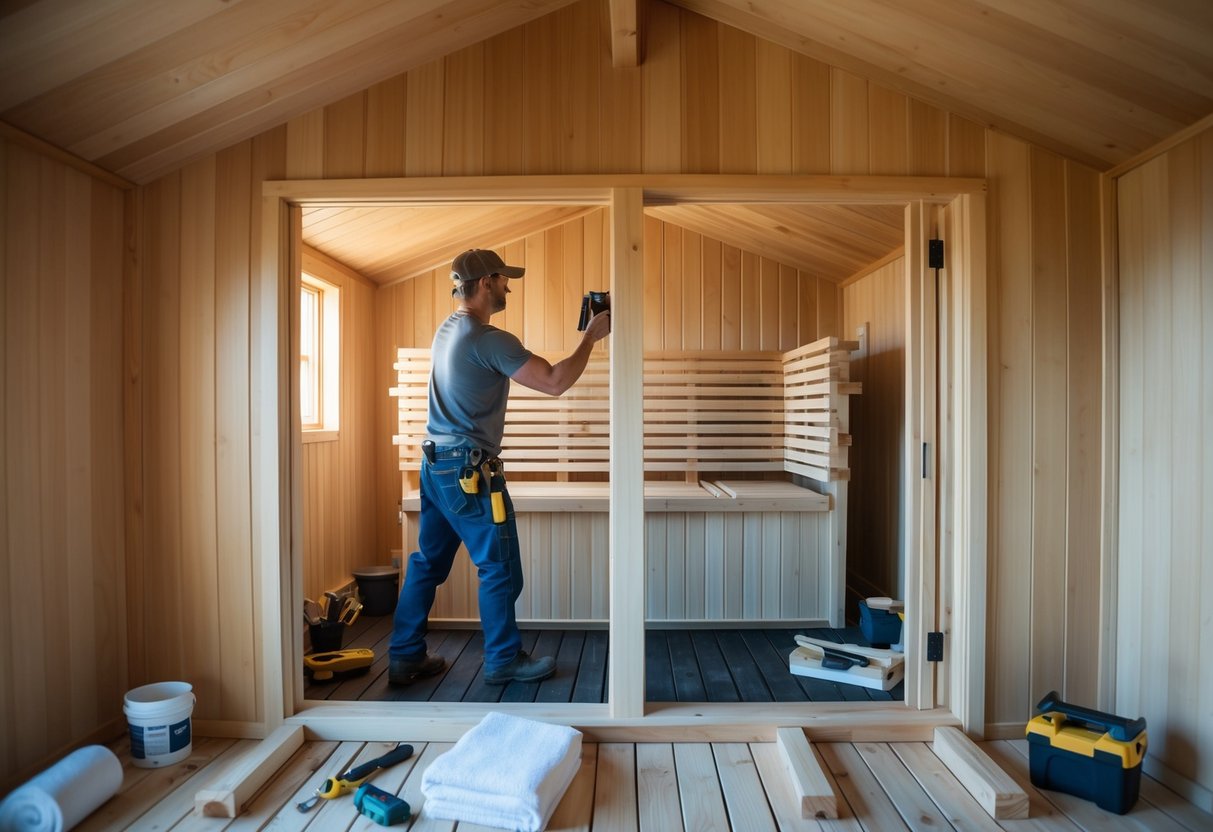Building a Home DIY Sauna: Relaxation and Health Benefits Explained
Building a home DIY sauna offers an inviting space for relaxation and rejuvenation. It combines the comfort of your home with the timeless tradition of sauna bathing, allowing individuals to unwind after a long day. By creating a personal sauna, homeowners can enjoy a variety of wellness benefits in privacy.
Using a sauna regularly can promote relaxation, enhance circulation, and even support skin health. These benefits arise from the heat and steam that help to soothe muscles and open pores. A homemade sauna is not only beneficial for health but also can serve as a peaceful retreat within the comfort of one’s home.
When considering a DIY sauna project, attention to detail and planning is crucial. Selecting the right materials and location can make the difference between a simple project and a truly transformative space. With careful planning, anyone can build a private oasis that provides both health benefits and a touch of luxury.
The Fundamentals of Sauna Construction

Building a home sauna requires careful planning and consideration. Identifying the right location, choosing essential materials, and ensuring a thoughtful design are key components in the construction process. These steps help achieve a functional and enjoyable space that meets the specific needs of traditional or infrared saunas.
Choosing the Right Location
Selecting the appropriate location is crucial for constructing a home sauna. The space should be well-ventilated to accommodate temperature and humidity changes. Basements and bathrooms often serve as optimal spots due to their existing plumbing and ventilation systems. Infrared saunas require less ventilation, but ample space still enhances comfort. Electricity access is necessary, as well as proximity to a water source for traditional saunas.
Determining the sauna’s size beforehand ensures it fits comfortably in the chosen location. For those planning a larger sauna, outdoor installations might be considered. It is essential to choose a spot that enhances relaxation and privacy. Ensuring that nearby surfaces can withstand heat and moisture is also important to preserve the structural integrity of the home.
Essential Materials and Tools
The construction of a sauna demands materials that can withstand high temperatures and humidity. Cedar wood is a favored choice due to its resistance to moisture and pleasant aroma. Other woods like hemlock or spruce can also be considered but should be rot-resistant. Insulation is vital to maintain consistent temperatures and includes materials like fiberglass.
Tools necessary for the project include saws, drills, and hammers. Also, screws and nails specifically crafted for wood construction are required. For infrared saunas, specific heating panels must be purchased, whereas traditional saunas need a stone heater or stove. Ventilation components are integral to maintaining air quality, ensuring the sauna remains a healthy environment.
Design and Layout Considerations
The design of the sauna impacts both functionality and aesthetic appeal. Thoughtful design enhances relaxation by accommodating user needs and preferences. Inside, benches should be positioned at varying heights to offer temperature variations. This design choice caters to different comfort levels.
A clear and simple layout enhances the user experience. For example, the lighting should be soft and inviting, setting a calming atmosphere. In traditional saunas, the heater should be positioned for optimal heat distribution and safety. For infrared models, the placement of panels ensures even heat circulation. A window can add natural light while maintaining privacy, contributing to a more enjoyable sauna experience.



